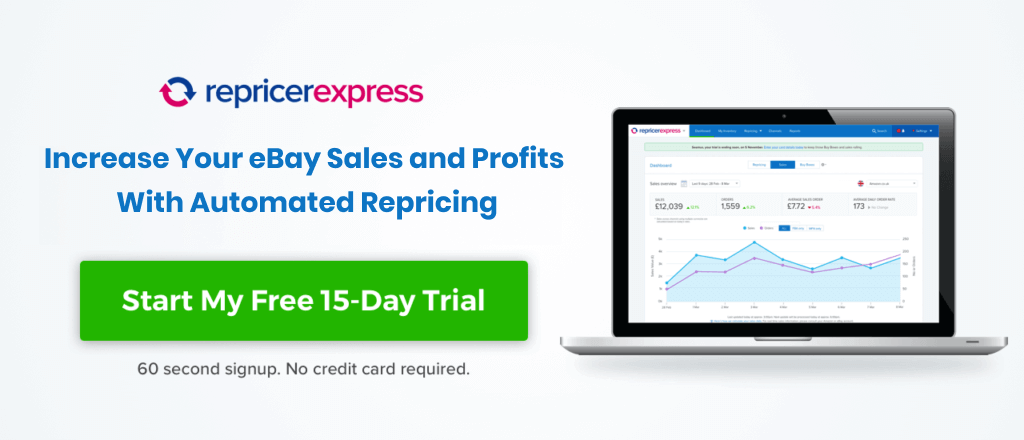Some of the best online sellers know that making money is having that money work for you, not the other way around. And with dropshipping being the epitome of that, let’s take a deeper look into it. Interested in learning how to use eBay dropshipping to make money? Then read on…
Dropshipping Isn’t Entirely Without a Startup Cash Flow
Usually, when you sell online, you have an inventory of items that a buyer browses and selects from. But with dropshipping, you do away with the inventory. Instead, buyers select an item on your page and buy it — but they’re buying that product from the wholesaler.
You’re just acting as a sort of representative for the wholesaler. When the customer puts in an order, you pass that order onto the wholesaler and they ship it to the customer, and you pay for the shipping charges.
eBay dropshipping is allowed as long as you keep up your end of the bargain: to guarantee delivery within 30 days of the end of the listing. Most other areas you have a fair of flexibility, like using the wholesaler’s description for your listing instead of writing your own, what price you want to sell at, and how to market your listings.
The Key to Successful Dropshipping is Picking the Best Products and Suppliers
One common mistake a lot of sellers make is to link up with really popular or trendy products. This is a bad idea because of how much competition you’ll face, especially if you’re just walking into the product category. It’ll be virtually impossible for you to get enough sales to really compete with the top sellers, as the ones at the top have spent thousands on marketing that you probably can’t afford.
What you want to do is select products that have good demand but not a megaton of sellers that you’ll be stifled by. It’s a little pointless to give you a list of specific products to go after, as you should be using these guidelines instead to dictate your search:
- Best Sellers Page: This should always be your starting point because it’ll tell you which products have the most interest. Amazon is a great resource to use for this.
- Risk: The higher the risk, the more you want to avoid the item. Risk is calculated by combining the product’s price and its sales volume; the higher something costs and the lower its sales volume, the bigger the risk.
- Main Item vs. Accessory: If you’re torn between two items, it’s almost always a better idea to go with the accessory than the main item. We mean things like cases and earbuds than smartphones. The profit margin tends to be higher, and so are the various cross-selling/upselling opportunities.
- Availability: The more available something is in person, the harder it’ll be to sell online. Look for things that are fairly scarce locally, as you’ll have a better chance of moving it online.
- Size: You’re paying the shipping fees, remember? So try to stick with items that aren’t terribly large or heavy because that’ll eat into your profit margins. And because one of the best ways to set yourself apart is to offer free shipping, the more you’ll have to cover yourself means the less you get to take home at the end of the day.
- Price: Just because a person is buying a wholesale item doesn’t mean they’ll be paying wholesale prices. You get to mark up the cost so you can increase the profit margin for yourself. But be careful of this: some items don’t do well to being marked up a lot, so stay away from items with a potentially razor-thin margin. Check the item’s average cost across a multitude of platforms so you can figure out how much you could potentially earn yourself.
- Fulfillment: You’ll be in charge of making sure the product reaches the buyer’s hands within 30 days — that’s eBay’s guarantee that you’ll have to uphold. Factor that into your search for a reputable supplier so you know you can always deliver by choosing suppliers with good shipping records. Another good idea is to keep in regular contact with your buyer by giving them status updates on the shipping.
One Last Piece of Advice
If you want to make a lot of money by dropshipping on eBay, master the art of timing. Learn when the best times to release your listings are and set up your auctions around them. One easy way to guide yourself is to pay attention to when high traffic hours take place. The more visits there, the more chances you stand of gaining a sale. A downside of this is your competition is also increased, so factor that into your research, too.
Generally speaking, Saturdays and Sundays between 11.00pm to 2.00am GMT tends to see the most traffic on eBay. You can choose to put up your auctions for then, or tweak them slightly to be a bit off-balance to suit your needs in a more well-rounded way.
Another thing to consider is your target demographic. If you’re selling to, say, millennials, they might not be on their computers late at night on the weekend because they might be out partying instead. Do your research and find out when your audience is most likely to be online, then centre your auctions around that.
Final Thoughts
One of the most important factors you can consider is the product’s price. It’s one of the first things buyers will look at, and it’ll be one of their deciding factors when it comes to decision time. But once you’ve got a price set up, that doesn’t mean it’s okay to sit with it forever.
You’ll want to keep altering it to fit the market’s demands, and using RepricerExpress to do that for you is one of the smartest decisions you can make. Not convinced? We’ll start you off with a 15-day free trial when you sign up now and you can take your time checking out all the benefits.






